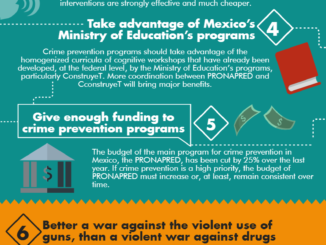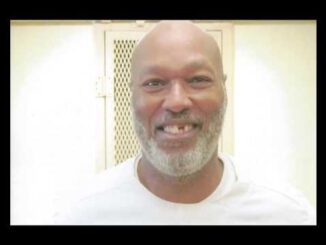
According to the formal definition , any action that is legally prohibited by the law can constitute a crime. At present, crime has become an integral part of our lives in the sense that we are all so much used to it simply because we hear or face crime every other day. In a society that we live in today the mass media has so much influence and sway that it is not a big deal when we wake up in the morning get a hold of a newspaper and read about some brutal murder the story of which is intentionally put in the paper for the sole reason of getting the reader’s attention. Then later in the day we might as well turn on the television and see the official footage where the police apprehend a serial killer who has murdered 15 people up to that point in different areas across the country. And finally in the evening we find some time to relax and watch a movie with a criminal content, which give a vivid thrilling story of an enraged sadistic murderer who kills innocent people left and right in order to accomplish his sinister and mysterious scheme. This is a typical day that a person spends in today’s world and it cannot but influence his or her social attitudes and perceptions. Living in a society like this, people get desensitized and when a new brutal murder is reported on television or in the tabloids not many people pay attention. Violence and aggression expressed in the movies do their job and the real-life situations do not startle people any more. However, there is one field in criminology that always draws my utmost attention and that is delinquency and crimes committed by children and adolescents. One simply cannot ignore such a disturbing phenomenon simply because crimes committed by children range from petty theft and shop-lifting to brutal clearly planned murders that make people stop and think about the world and about its future. It also makes me wonder where this world is going given the fact that we have twelve year old murderers whose transgressions surpass the crimes committed by their older counterparts in terms of brutality and sophistication.
Juvenile crime and delinquency has become a very vital issue in the society at this point in time. Officially a juvenile crime is any offense committed by children or adolescents under the age of 18 years. These crimes are legally referred to as delinquency and would be considered serious offenses, if they were they committed by adults. There are also minor transgressions that are termed status offenses. Those include some minor misconduct such as acts of social disobedience. Status offenses are not usually punished by serving term in prison and delinquency offenses along with the status crimes are all handled by the Juvenile court. (Encyclopedia Britannica, 2001) Nevertheless, there are more serious offenses such as murders, rapes committed by minors and those can also be brought to the criminal court and involve more serious punishment. There was a social debate that caused a great deal of controversy concerning the age that children can be actually held accountable for their personal actions. According to Anglo-American law, the definition of crime implies any action that is prohibited by the law with a criminal intent. The proponents of the theory that children cannot be responsible for the offenses that they commit maintained that children under the age of 14 cannot theoretically have a criminal intent due to a variety of factors. This infancy defense that was argued to be very theoretically consistent was eventually disregarded by most juvenile courts as people realized more and more that acts of delinquency can be committed by children of virtually any age. All crimes are committed with a criminal intent otherwise it is not a crime. Therefore the age factor is now discarded as something totally inconsistent with most psychology and criminology doctrines. (A. Bandura, 1973, pp. 134-137)
Juvenile crime is so overwhelming today that the importance of this issue cannot be overestimated. Delinquency acts and crimes committed by children range from petty shoplifting to smoking marijuana to more serious offenses such as rapes and murders. According to the statistical data reported by the bureau of statistics, the level of crime among children has been steadily decreasing since the middle of 1970s . Nevertheless the public seems to be more aware of this problem because of the thorough coverage by the media and press. During the 1980s the reports showed that every fifth person that was arrested for some public violation or more serious offenses was under the age of 18 years. In other words 20% of all crimes are committed by children and adolescent. Like I have already mentioned in the 70s reports portray a much grimmer reality where all statistical indicators almost in all possible categories of serious offenses were much higher. Furthermore the crimes committed by under-aged females constituted a much greater portion. At present the juvenile crime reportedly has been slightly going down for more than 5 consecutive years but nevertheless some experts assert that the data reflected in those reports is slightly underestimated and the overall level of juvenile crime and delinquency has been significantly underreported. The activities that are deemed to have been underreported include mostly street crime such as gangs, shoplifting, marijuana smoking, drugs and also acts of vandalism. Therefore, it is believed that the actual crime level is virtually higher than it was in the 1980s (Microsoft Encarta Encyclopedia 2002 edition).
The essential component of juvenile crime is said to be a group or a gang activity (A. Bandura, 1973, pp 263). Children most of whom have run away from homes live on the street and consequently form and gang. The activity of such a group usually involves acts of vandalism and petty shop-lifting, and theft. They also engage in acts of violence when two or more gangs compete for the right to exist in a particular city district. That oftentimes involves use of lethal weapons such as knives, sticks, or sometimes even guns. When there is a collision between two gangs there is a very high possibility of violence and sadism. Children brutally fight with one another as though those were two armies that went to war. The objective of such gang activity is material gain. The social gang is a relatively permanent group of youths who generally exist in accord with society. Besides the shoplifting and vandalism gangs also engage in drugs distribution. Gangs may attack a person on the street with a purpose of steeling his or her money (Encyclopedia Britannica 2001).
There are several theories that make an attempt to explain why criminals act the way they do and essentially why they display aggression, hostility and eventually commit something outrageous and atrocious. One of theories of psychology that tries to analyze people’s behavior is referred to as social learning. This doctrine asserts that human behavior is essentially shaped by the society and by parents starting from the infancy stage. Social learning is based on the premise that people are very likely to link certain behavior to some particular emotions or feelings that they associate with it (A. Bandura, 1973, pp 74-77). For example aggression might be linked to some incidents that make person feel angry, aggravated or nervous. These emotions in turn trigger that behavior that is the direct consequence. This model can also be applied the other way around. When a positive emotion is stimulated in a person’s mind it is very likely that it will trigger a good behavior. By contrast, when a person is overwhelmed with aggression and anxiety, that most likely will trigger a negative response and consequently will make a person display hostility and destructive behavior. The social learning theory asserts that a person’s behavior can be interpreted and the actual cause or the stimulator can be identified in all possible situations. It also maintains that human behavior can be controlled and indeed modified. Of course it is not always so easy to modify behavior among the adults because they already have shaped their mind and perceptions of the world but sometimes it can be done. The theory further explains that a human brain is very sensitive to outside stimulation and a proper behavior can actually be reinforced by eliciting proper emotions and feelings that are very like to trigger certain behavior in a person. Most motivation techniques are built on these premises and they postulate how the proper behavior can be invoked among the employees in the workplace. One such technique suggests that a manager must reinforce good behavior through sincere appraisal. That implies that whenever a person does a good job a manager acknowledges his or her professionalism that elevates a person’s self-esteem. Or there can be a specific reward that will do the job whenever employees fulfill their task the proper way. In psychology this is called reinforcing the good behavior (R. Baron, 89, pp 234). A person is very likely to repeat the good behavior. By the same token, an employee will be more motivated to do a good job because it is known that diligent work will eventually get him or her that reward. In a similar fashion, negative behavior can be reprimanded. Whenever a worker does a bad job he will be properly punished by the management and that will develop sort of an instinct or rather a habit in his consciousness that will prevent that sort of behavior from ever happening again. Punishment of course can vary but the idea here is to make a person understand that bad performance will not be tolerated. It is vitally important to make it clear that bad performance will prevent the employee from achieving his or her personal objectives that may include promotion, high salary, certain benefits etc. All these techniques are built upon this doctrine of social learning. Definitely, it does not hold true for all possible situations because the human brain is for sure one of the most complicated and sophisticated things possible. Therefore there may be cases where these assumptions fail to explain what is really going on and why that particular behavior is trigger by that particular emotional stimulation. There are incidents where the behavior of a human-being simply cannot be understood neither can it be interpreted by any psychological theory. Nevertheless, the theory of social learning proved to be very effective in understanding criminal conduct. It also gives us an insight into why normal people become criminals in the first place and then how criminals are motivated to do what they do and what makes them commit crime. Criminals are people too and they also have emotions and feelings and even though some people maintain that their actions are most of the time irrational and make absolutely no sense, I think that there is a deep psychological trauma or an emotional incident that made a person make that very first step towards self-destruction and gradual personal degradation (R. Baron, 1989, 256-268).
There are various theories that try to explain the psychological nature of juvenile crime and how personality traits and psychological peculiarity may be linked to it. Others may attempt to view juvenile crime as a purely social phenomenon that is virtually brought about by the society (A. Bandura, 1973, pp 45). There is some truth to all of them even though most of these theories are subject to criticism. One of the reasons that children engage in crime is because society dictates them to do so. Violence that is constantly portrayed in the movies definitely has some impact on children with vulnerable not-yet-shaped moral values and standards. Also, another big factor that I think is very important is they way parents bring up their children. That plays a crucial role. That explains why juvenile crime is at such a high level in the US as compared to other European countries. Parents do not have time to spend with their children and do not pay adequate attention to them. Also, domestic abuse definitely affects child’s psychology. Home and family is associated with something essentially bad and evil in the minds of children who are physically abused by the parents. Therefore the only way for them is to go on the street where they think they are independent of their parents and do not have to put up with that attitude any longer. Some children might as well be unsatisfied with their current status in a society and they view crime as self-actualization. Even though all these theories are true it is difficult to explain each particular case using just one approach. This problem is multifaceted and therefore a thorough psychological analysis must be conducted before we understand the nature of the dilemma. Juvenile crime is a serious issue and we have to pay our utmost attention to this issue and attempt to alleviate the situation by any means possible.
Bibliography
Bandura, A. (1973). Aggression: A social learning analysis. N.J.: Prentice Hall.
Burton, J. (Ed.) (1993). Conflict: Human Needs Theory. Macmillan Press.
Encyclopedia Britannica, Deluxe Edition, 2001.
Microsoft Encarta Encyclopedia, 2002 Edition.
White, Robert (1989). Psychology: the essential science. New York: Random House.
Unless otherwise stated, PONIREVO and/or its licensors DO NOT own any intellectual property rights in the website and material on the website. Majority of the site’s content has been scraped and auto posted by a third party artificial intelligence program —– PONIREVO Creation Team.
Proudly WWW.PONIREVO.COM
by Tim Johnson



